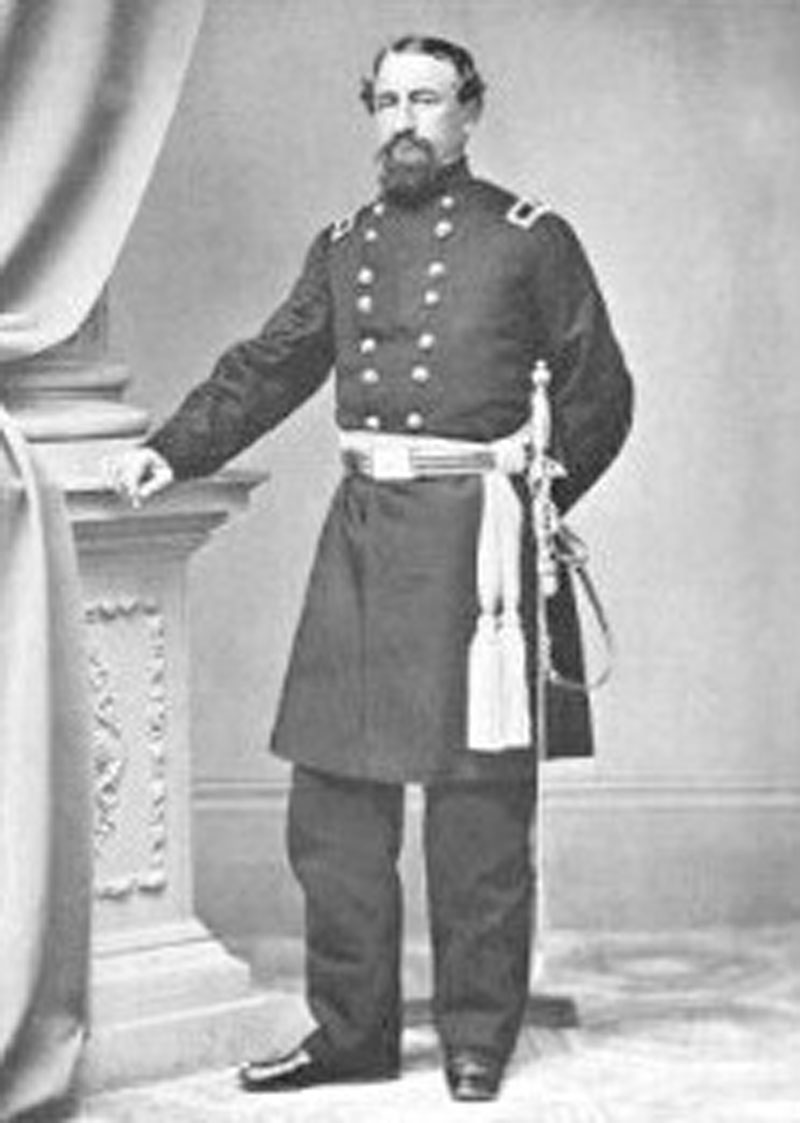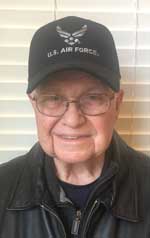The Palmyra Massacre 1862

Following the Kansas-Nebraska Act of 1854—which allowed Kansas to allow or reject the institution of slavery by popular sovereignty—a destructive and sometimes bloody border war between Kansas and Missouri partisans raged for six years. The grizzly Manson-style murder of five settlers from Missouri in Pottawatomie, Kansas, in 1856, by the radical abolitionist, John Brown, helped fuel a growing flame of regional distrust. Brown was later hanged in 1859 after an unsuccessful attempt to capture the U.S. arsenal in Harpers Ferry, West Virginia. He had planned to start a bloody slave insurrection. The fact that Brown was praised in many of the pulpits, newspapers, and political debates in New England greatly alarmed the South. This added more fuel to the already smoldering issues of States Rights and enormous, unfair tariffs.
More than one thousand military engagements took place in Missouri during the Civil War, and in 1863, Missouri was the scene of the most drastic and repressive military action directed against civilians in U.S. history—General Order 11. The Palmyra Massacre of October 1862 is only one of many incidents.
Some of the first indications of Union leanings toward a Total War philosophy occurred in Missouri. About 80 percent of Missouri’s population were first or second generation Southerners. One of the thirteen stars in the Southern Cross honors Missouri. Union forces quickly occupied Missouri before secessionist sentiment could be marshaled in the state legislature. Secessionist legislators, however, escaped to Neosho, Missouri, and seceded on October 31, 1861. Pro-secessionist Governor Claiborne Jackson and former Governor Sterling Price left to form the Missouri State Guard and join with Confederate forces in Arkansas. Other Southern sympathizers engaged in partisan warfare in Missouri. These Confederate partisans were generally treated as outlaws by Union officials. This outlaw status and mistreatment of their families and other Missouri civilians by Federal troops spawned the bloody vengeance raids of William Quantrill and William Anderson. This extended into the Reconstruction era with the exploits of the James and Younger brothers.
The Palmyra Massacre
In September of 1862, Col. Joseph Porter, commanding a Missouri Confederate cavalry unit, moved into Northeastern Missouri to recruit volunteers and to achieve some limited military objectives. On September 12th, Porter raided Palmyra, rescuing 45 Confederate prisoners and capturing among others, Col. Andrew Allsman. A recently retired Union cavalry leader in his sixties, Allsman had been assisting the Union Provost Marshall in Palmyra in identifying Southern sympathizers. Porter apparently released Allsman within a few days, but Allsman disappeared on the road back to Palmyra. On October 8th, suspecting foul play against a valuable Unionist informant, the Union commander in the area, Col. John McNeil, acting through Provost Marshall William Strachan, posted a notice to Col. Porter that if Allsman was not returned safely by October 18th, ten of the several dozen Southern sympathizers then held in the Palmyra and Hannibal jails would be selected for execution on that day. McNeil’s action was probably influenced by his instructions from Brigadier General J. W. Schofield on June 12th not to rest “until you have exterminated the rascals” [Southern partisans].
No one knew if Col. Porter was still in Missouri, and by the 17th no one had come forth with any news of the missing Unionist informant. Though many doubted that such an order would be carried out, ten men were selected that evening to die by firing squad at 1:00 pm the next day. One of these, Willis Baker, was suspected of murdering a Union neighbor. Another, Captain Thomas Sidener, who was soon to be married to a local girl, was a captured Confederate cavalry officer. According to the local Palmyra newspaper, the Missouri Courier, except for their Southern sympathies, the crimes of the other eight were unknown. Later that night at the Palmyra jail, Rev. James Green prepared them to meet their maker on the next day.
On the next morning, according to Judge Henry Clay Dean and Cole Younger, the young wife of William Humphrey, and the mother of his several small children, went to Col. McNeil to plead for her husband’s life. When he cursed her, she fled in fear to Provost Marshall Strachan to persuade him to intercede. Strachan said it could be done for $300, and so through the kindness of two gentlemen she quickly raised the money. But when she returned, Strachan also demanded that she submit to his lustful desires. Mrs. Humphrey collapsed before him and was found later in a state of physical exhaustion and mental incoherence. Strachan then went to the jail and demanded that a substitute replace Humphrey. At first Humphrey adamantly refused to be replaced, but reminded that he was the sole provider to his young family by nineteen-year-old orphan, Hiram Smith, at last agreed to the change. And so it was that courageous young Hiram Smith took Humphrey’s place among the condemned men.
Three wagons carrying the ten condemned men and their coffins left the jail shortly before 11:00 AM and proceeded to the fairgrounds about a half mile east of town. Captain Sidener was wearing the suit he had purchased for his wedding. At the fairgrounds, a small military band played. Then the prisoners knelt in prayer and were briefly attended by Rev. R. M. Rhoades. Provost Marshall Strachan shook their hands, and they were seated on their coffins. They were offered blindfolds, but only a few took them. Facing them were 30 riflemen from the [Union] 2nd Missouri Militia. To each side were reserves. Only a few of the condemned men seemed to show any sign of fear. At the command to fire, the volleys did not occur simultaneously. Three of the prisoners including Captain Sidener were killed more or less instantly. Six wounded lay writhing and moaning on the ground, and one was not hit at all. The reserves dispatched the six wounded men and finally the seventh with pistol shots to the head. This ghastly series of executions took fifteen minutes.
The pro-Union Missouri Courier justified the execution of the ten Southern sympathizers, who had not received the benefit of formal charges, hearing, or trial, with these words:
“It seems hard that ten men should die for one. Under ordinary circumstances you would hardly be justified. But severe diseases demand severe remedies. The safety of the people is the supreme law. It overrules all other considerations. The madness of rebellion has been so deep seated that ordinary methods of cure are inadequate. To take life for life would be little intimidation to men seeking the hearts blood of an obnoxious enemy. They would well afford to make even exchanges under many circumstances. It is only by striking the deepest terror in them, causing them to respect the lives of loyal men that they can be taught to observe the obligation of humanity and of law.”
The Missouri Courier’s appalling and arrogant self-righteous philosophy was typical of the Radical Republicans and radical abolitionists of that era. It does not stem from any legitimate form of Christian morality, but from the abstract morality and expedient pragmatism of secular humanism. This was shameless self-justifying brutality masquerading as patriotism. But it was not patriotism. It was totalitarian statism.
To their credit, many other Northern newspapers including the then conservative New York Times were outraged. The bad publicity from the Palmyra executions was discussed in at least two of Lincoln’s Cabinet meetings. Less than six weeks later, after attempting to suppress further news and outcry, President Lincoln promoted Colonel McNeil to the rank of Brigadier General. A fellow Union officer brought charges against Provost Marshall William Strachan, finally resulting in his conviction in 1864. However, Union General William Rosecrans overturned the conviction.
Palmyra was not the only demonstration of Total War philosophy in Missouri. Two similar mass executions involving a total of 26 Confederate POWs and civilians had already occurred in the northeastern Missouri towns of Kirksville and Macon in August and September. Col. McNeil was responsible for the first and Brig. General Lewis Merrill the second. On August 25, four days after Quantrill’s raid on Lawrence, Kansas, Generals Ewing and Schofield, signed General Order Number 11, which forced more than four-fifths of the families of three western Missouri counties from their homes and lands because of their sympathy and aid to Confederate partisans. They faced harassment and looting even as they fled the state. Burning and pillaging of the homes and farms of Southern families elsewhere in Missouri were commonplace. Torture by strangulation became a standard method for forcing civilians to reveal the location of money and valuables or for deriving information on Confederate partisans. The stepfather of Jesse and Frank James was strangled to the point of brain damage.
Many courageous Union officers, including General George B. McClellan, opposed the Lincoln Administration’s Total War policies, but they did not prevail. Many Northern politicians also opposed these policies, but were unable to prevail in Congress. In 1907, the people of Palmyra, Missouri, erected a monument honoring their ten Southern patriots.









 Mike Scruggs is the author of two books: The Un-Civil War: Shattering the Historical Myths; and Lessons from the Vietnam War: Truths the Media Never Told You, and over 600 articles on military history, national security, intelligent design, genealogical genetics, immigration, current political affairs, Islam, and the Middle East.
Mike Scruggs is the author of two books: The Un-Civil War: Shattering the Historical Myths; and Lessons from the Vietnam War: Truths the Media Never Told You, and over 600 articles on military history, national security, intelligent design, genealogical genetics, immigration, current political affairs, Islam, and the Middle East. 


